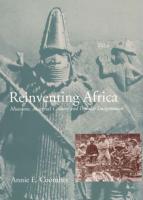Description
Between 1890 and 1918, British colonial expansion in Africa led to the removal of many valuable African artifacts that were subsequently brought to Britain and displayed. Annie Coombes argues that this activity had profound repercussions for the construction of a national identity within Britain itself - the effects of which are still with us today. Coombes argues that although endlessly reiterated racial stereotypes were disseminated through popular images of all things 'African', this was no simple reproduction of imperial ideology. There were a number of different and sometimes conflicting representations of 'Africa' and of what it was to be African - representations that varied according to political, institutional and disciplinary pressures. In particular, the professionalisation of anthropology over this period played a crucial role in the popularisation of contradictory ideas about African culture to a mass public. Pioneering in its interdisciplinary research, this book offers valuable insights for art and design historians, historians of culture, imperialism and anthropology, social historians, anthropologists and museologists.
Last updated on
Product Details
- Yale University Press Brand
- Oct 20, 1997 Pub Date:
- 9780300068900 ISBN-13:
- 0300068905 ISBN-10:
- 292 Pages
- English Language
- 9.98 in * 7.52 in * 0.65 in Dimensions:
- 1 lb Weight:




